A conversation in a Facebook moms group launched my journey to discover the best debit card for my children. High school students were attending a school-sponsored field trip where the eatery didn’t accept cash, so moms were frantically searching for digital payment options that would allow their youngsters to buy lunch. And so I set off to find a debit card that I could open in my children’s names — one with no fees and that included helpful financial literacy tools.
There are plenty of companies that offer debit cards or bank accounts specifically geared toward children and teens under the age of 18. Many also provide educational resources and apps to help your child build good money habits. But there are risks to consider. We’ll help you sort through which companies help to keep your child’s personal information safe and include appropriate parental oversight features so you can monitor your child’s spending.
The best debit cards for kids and teens, compared
| Card | Monthly fees | Age |
| Greenlight Debit Card | $5 to $15, for up to five children | Any |
| BusyKid Debit Card | $4 for up to five children | Any |
| GoHenry Debit Card | $5 for one child; $10 for up to four children | 6 to 18 |
| Step Debit Card | None | Any |
| Axos First Checking | None | 13 to 17 |
| Chase First and High School Checking | None | 6 to 17 |
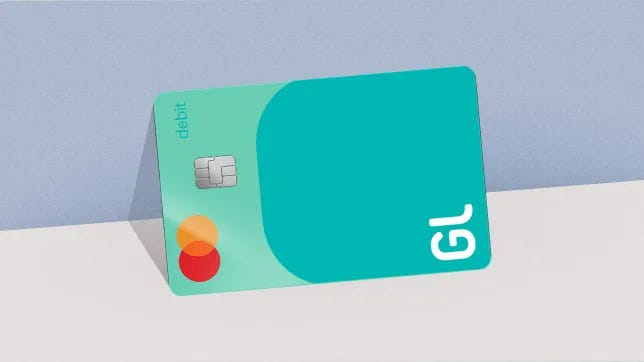
Greenlight Debit Card for Kids
Best overall
Minimum age: None
Monthly fee: $5 to $15 per month, for up to five children
Free trial: 1 month
ATM fee: None
Purchase fees: None
One of the most popular debit card apps for kids, Greenlight Debit Card for Kids allows parents to restrict spending to specific stores, lets kids earn interest on growing balances, and helps families set specific savings goals. The app is intuitive and easy to navigate.
You can choose between three plans: Greenlight Core ($5), Greenlight Max ($10) or Greenlight Infinity ($15). Your child can earn an annual percentage yield between 1% and 5% on savings balances up to $5,000, depending on the plan. The Greenlight Infinity plan comes with additional safety features, including automobile crash detection and SOS alerts.
We like that Greenlight lets parents pay kids for completing chores — you can schedule automatic payments so you don’t forget. Lastly, we like that Greenlight lets kids divide their funds between spending, saving, investing and giving.
For more information, see our full review of the Greenlight Debit Card for Kids.
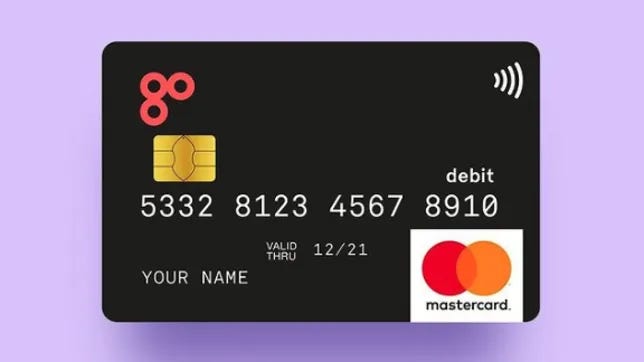
GoHenry Debit Card for Kids
Best security features
Minimum age: 6
Monthly fee: $5 for one child; $10 for up to four children
Free trial: 30 days
ATM fee: None
Purchase fees: None
Known for its personalized cards and customizable tasks like specific chores and savings goals, GoHenry is a good choice for parents who want to help younger kids take on more household responsibilities and pay them for a job well done. What we really like: The company’s policy clearly states that it doesn’t sell your — or your kids’ — personal information to third parties without your permission.
For more details, see our full GoHenry Debit Card for Kids review.
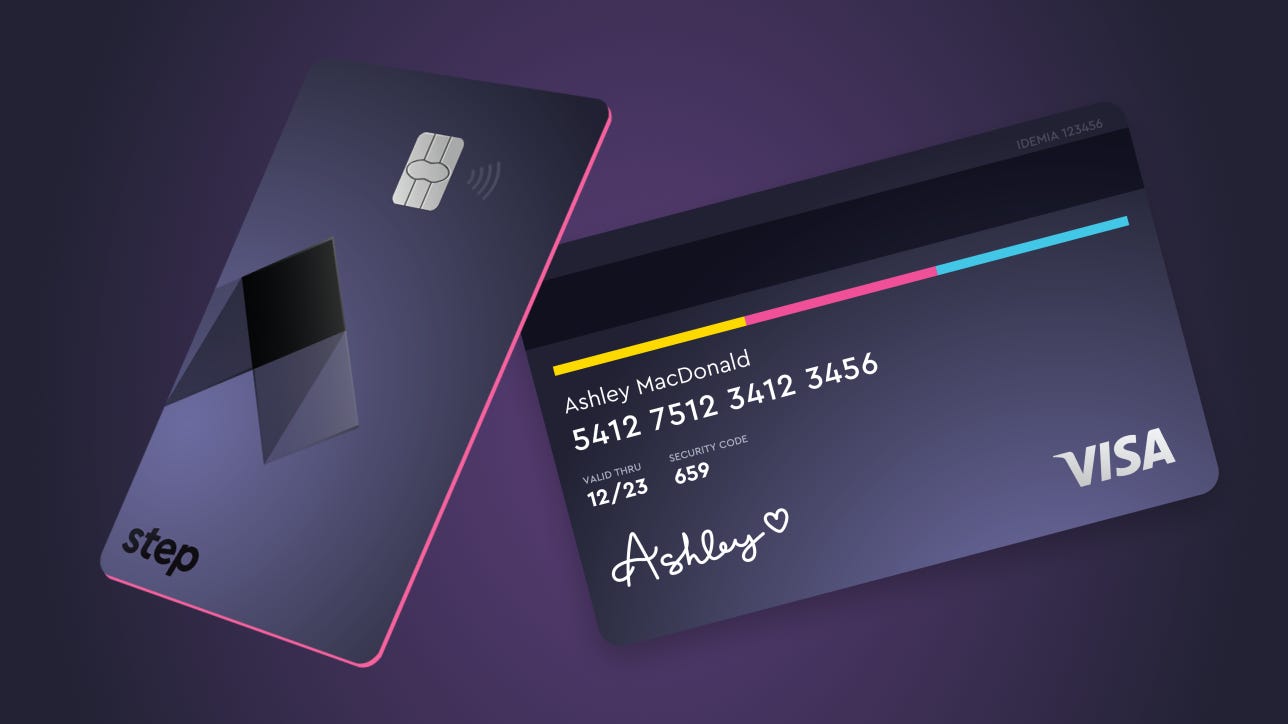
Step Card for Teens
Best for any age with no monthly fees
Monthly fee: None
Free trial: None
ATM fee: None
Purchase fees: None
Step may be better suited for teens who are ready to level up their financial knowledge, as it provides access to investment tools and offers financial literacy training courses. However, there is no minimum age to sign up, and younger children can easily use Step to start learning how to manage spending accounts and set savings goals. And Step doesn’t charge a monthly fee to maintain the account.
Like a regular debit card, Step draws on deposited funds to pay for purchases. Unlike a debit card, the Step card processes all transactions as credit — which means your child can build credit safely without having to worry about overdraft fees or accruing interest.
We like that Step offers direct deposit so your teen can send their paychecks directly to their account. Step also lets them round up purchases to the nearest dollar and add the difference to a savings goal. If they use direct deposit to add $500 or more per month to their Step account, your child can earn 5% interest on balances up to $250,000. Your child can also earn rewards when using their debit card at select merchants.
But, there’s a major drawback to consider. Step makes it clear that it shares your personal information with business partners to serve up product or service offers based on your child’s data. Step’s privacy policy says you can opt out, but you’ll need to contact the company directly.
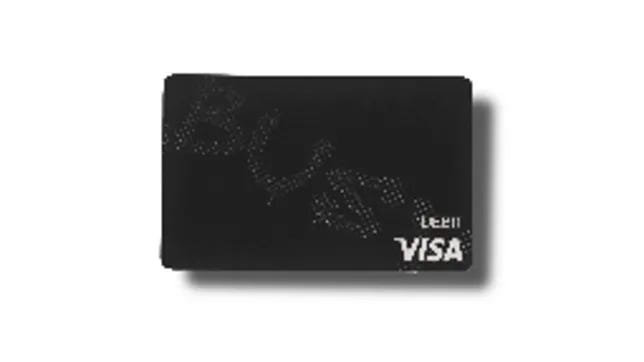
BusyKid Debit Card for Kids
Best for financial literacy tools
Minimum age: None
Monthly fee: $4 a month, up to five children per plan
Free trial: 1 month
ATM fee: None
Purchase fees: None
The BusyKid Visa Prepaid Debit Card is an excellent resource for parents interested in teaching their kids how to grow their savings. Kids can put cash in a savings account, invest it in individual stocks or donate it to a charitable cause. And you can match what your kids contribute to essentially double their savings. Plus, you can send bonuses for rewards — like good grades or just because.
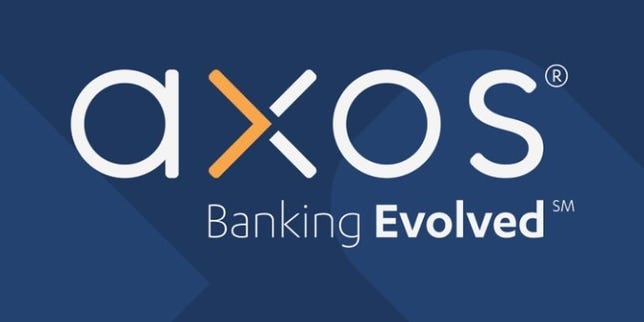
Axos First Checking
An interest-earning account
Monthly fee: None
Free trial: None
ATM fee: None
Purchase fees: None
Axos’ First Checking account teaches teens (ages 13 to 17) to use a debit card. Your child can use the account to send money to people and vendors and to pay bills. It also offers 0.10% APY, so your child can earn some interest on their savings. We like that there are no monthly maintenance, overdraft or nonsufficient funds fees, plus teens can get up to $12 in domestic ATM reimbursements per month. But there aren’t many other perks geared toward rewards and allowances.
Parents can manage the teen’s account from the mobile app. This will allow you to monitor spending, lock and unlock the debit card, and set alerts.
Axos does share (PDF) your personal information with other financial companies to market products and services to you — but you can opt out of targeted affiliate ads.

Chase First and High School Checking
A good option for Chase customers
Minimum age: 6
Monthly fee: None
Free trial: None
ATM fee: None
Purchase fees: None
Chase offers two types of checking accounts with debit card access for youth. Parents must already have an existing checking account to open an account for their kids, but neither account charges a monthly fee or requires a minimum balance. The Chase First Banking account is available to children ages 6 to 17. It includes useful features that parents will appreciate, such as spending controls, savings goal tracking and a recurring allowance option that can be paired with a chore list.
The Chase High School Checking accounts are for kids ages 13 to 17 and offer more freedom — this account offers account alerts instead of parental spending controls — and provides direct deposit, mobile check deposits and Zelle transfers. One downside is that you and your child must go to a branch to open the account in person.
Why I wanted a debit card for my children
It’s easy to discount this, but children can start earning money at an early age. Whether from birthday gifts, rewards for stellar report cards or generous grandparents, your child may enjoy a steady source of income well before they hit double digits.
Teaching your child how to manage money early on can set them on the right path for their financial future. Experts recommend exposing your children to financial literacy topics from an early age. “Even as a toddler, they can still start becoming comfortable and confident with money,” said Amy LeBaron-Blacketting, an assistant professor of family life at Brigham Young University, in an interview with ZDNet.
While a piggy bank is a great visual aid to expose young children to savings and cash management concepts, opening an account with debit card access for your child can be more convenient, easier to manage and more educational as it allows them to participate in more complex financial transactions such as transferring cash to savings accounts, opening a certificate of deposit and investing.
But I found that not all banks and credit unions offer accounts with debit card access for minors under the age of 13, and I wanted them to have an account in their name.
A debit card designed for kids — one with helpful educational tools and an easy-to-parse interface — can help teach them how to set savings goals, “earn” money from parents for completing chores or receive direct deposits from a real job once they begin receiving paychecks. And debit cards are generally a safer option than carrying cash.
If you’re worried about overspending or poor money management, most debit cards designed for kids are connected to apps that have numerous parental controls and protections allowing parents to keep a close eye on their children’s financial activities.
Are debit cards for kids safe?
New technology always presents risks — especially when kids are involved. Two-thirds of parents believe that raising kids is more challenging than 20 years ago, precisely because of technology, according to a Pew Research survey.
And it’s not just screen time that raises concerns — 915,000 children were victims of identity theft from July 2021 to July 2022, according to a 2022 study by Javelin Strategy & Research.
Though that was not the fault of the financial industry, the banks do play a role in the problem.
Data mining has become a valuable resource for businesses, and financial corporations have shown that they are willing to sell customer data. As such, the burden ultimately falls to customers to monitor and protect their own — and their children’s — data.
Weighing the benefits and risks of a debit card for your child is a balancing act. The main thing to consider is how much you’re comfortable sharing online. While every issuer is different, you’ll need to provide identifying information about yourself and your child to sign up, including birth dates, Social Security numbers, address and a phone number. The company may also ask you to share your GPS location history, purchase history and behavioral profile — information that may allow the app to share targeted ads for products and services. That said, debit cards for kids are typically no riskier than their adult counterparts for a few reasons:
- Child-specific laws: The Children’s Online Privacy Protection Act, or COPPA, takes privacy a step further for children under 13 who use banking products by requiring issuers to clearly outline what information they’re collecting and get parental consent beforehand. Pay close attention to whether the issuer intends to sell your child’s data to third parties.
- Purchase protection: If your child’s card is lost or stolen, some issuers offer refunds for fraudulent purchases — for an additional fee. Greenlight’s pricier Max and Infinity plans provide purchase protection.
- Card security: Prepaid cards are equipped with EMV chip technology and password-protected accounts that require a PIN or facial recognition to access the account.
- Locking capability: Most debit cards for kids come with a parental locking feature that allows you to protect the cash in the account through your app if the card is lost.
- Deposit insurance: Prepaid debit cards issued by banks insured by the Federal Deposit Insurance Corporation protect up to $250,000 per person, per institution, meaning you won’t lose the money in your account if the bank fails.
Although the same security measures protect kid and adult debit cards, it bears repeating that any information you share about your child online increases their risk profile. Online data breaches have exposed massive accounts, which often contain sensitive information, including social security numbers, addresses, phone numbers and credit card numbers.
After signing your child up for a debit card, look for bills or credit card applications addressed to them, and ask questions if a debt collector calls with their name on file. The Federal Trade Commission outlines steps to take if you suspect identity theft, and Experian offers a free ID scan service to see whether your child’s SSN is active on any credit accounts.
Setting expectations with your child
Before handing it over to a young and eager spender, a detailed conversation about debit card use is crucial. When the debit card arrives, sit down with your child and discuss the critical points.
- Safety: Most prepaid debit cards provide a locking feature if the card is lost or stolen, but you can’t take the necessary steps without communication from your kid. Remind them to keep their card in a safe place, not to share their password or PIN with anyone, or make purchases on an unsecured Wi-Fi network. And only use ATMs at banks to mitigate the risk of debit card skimming — a hack to steal card numbers. If they think their card is compromised, they should tell you right away.
- Spending rules: If you’re concerned about where your child may spend their cash, consider signing up for a debit card that allows you to block certain retailers. If you’ve already signed up for a card that doesn’t have this feature, talk to your child about appropriate spending habits and let them know that you’ll be monitoring their purchases.
How I chose a debit card for my children
Unfortunately, there was no perfect debit card that checked all the boxes. So, I developed a list of must-have features and compromised on the nice-to-haves. I preferred an account that I could open in their names and one they could continue to use as teenagers — my youngest was 7 at the time. I wanted them to assume ownership and treat this account as their own, even as young children.
I was also interested in an app with financial education tools and games, parental controls and support for setting savings goals. Above all, I wanted to avoid debit cards with monthly fees. That was a nonstarter. Here’s why I chose Step:
- No monthly fees, minimum deposit requirements or age restrictions.
- My kids could set savings goals using subaccounts.
- Each debit card purchase helps my children establish positive credit histories because the card is actually a prepaid credit card.
- I receive alerts in real time whenever the account is accessed.
I don’t love that Step’s high-yield savings account is only available if your child can maintain $500 per month or more in direct deposits; otherwise, the account doesn’t earn interest. (We keep a small amount for spending in the Step account and use a separate high-yield savings account for interest growth.) Transfers from linked debit cards are available instantly, so I can add money at a moment’s notice if needed. Here are some other reasons I don’t love Step:
- The companion app has limited educational resources for youth, mainly geared toward high school students.
- The app also doesn’t provide tools to create chore lists or distribute an allowance based on task completion.
- Parents can’t set spending limits or restrict spending to approved businesses or vendors through the app.
Choosing the best debit card will depend on your needs as a parent and what’s best for your child when kickstarting their personal finance journey.
Factors to consider before selecting a debit card for your child
Before you begin, familiarize yourself with parental controls or educational resources available to help improve your child’s financial literacy. Many debit cards for kids also provide companion apps that let you set chores or specific goals, which you can reward with a cash deposit.
Also, consider the following factors:
Parental controls
All of the apps here include a variety of parental controls, including the ability to automatically pay an allowance, lock the debit card or glance at your kid’s available balance. Some features let you select which types of purchases your kids can make, set spending limits and set rewards for the completion of certain tasks. Different apps provide varying degrees of control, but most will let you keep tabs on your child’s spending and saving, and help them manage their money as needed.
Educational resources
Most of the cards here include access to educational resources for you and your child. Your kids can learn important skills like budgeting, saving, spending and even investing. Some cards offer resources based on age and financial literacy categories — such as spending, saving, credit and more.
Age
Some debit cards designed for kids have minimum age limits, but most allow you to sign up a child until they’re 17 years old; they can open an account on their own at 18. You’ll have to confirm the minimum or maximum age, and decide if it’s the right time for your child to get a debit card.
Eligibility
Many debit cards designed for children require personal information and a shared bank account. Parents must also provide information and download the app to manage their kid’s account and transfer money.
Typically, this information includes simple identification such as email, phone number, address, date of birth and potentially the parent’s and child’s Social Security numbers.
Spending expectations
Some debit cards for children feature spending and withdrawal limits that parents can set. You’ll want to be sure your child’s spending won’t exceed the debit card’s limits.
Bank familiarity
You could see if your preferred bank offers a children’s debit card. It’s usually easier to get new products or good terms if you already have an established relationship with the financial institution.
How to sign your child up for a debit card
Once you’ve settled on a debit card for your child, follow these steps to apply:
1. Choose the debit card that best matches your child’s spending and provides helpful financial literacy resources.
2. Apply securely on the card issuer’s website by providing all of the required information, including name, date of birth, address, email, phone number and potentially your SSN.
3. Help your child build responsible financial habits. Talk about how much they can expect to receive regularly and create ground rules to help them allocate their funds responsibly.
The bottom line
My children have had debit cards for nearly two years and I’m reasonably happy with the convenience and exposure to complex financial topics having this account affords them. Their purchase requests are fairly simple: a new video game, book series or drawing kit here or there. They can also support worthy causes with financial donations in their name.
To compensate for the limitations in oversight features available with many subscription-based debit card plans, I implement spending controls by minimizing the cash in their spending accounts and only handing over the physical card for preapproved — by me — purchases.
You have a number of options when searching for debit cards for young children and teens. I started my search with my current banks before reviewing fintech options. Subscription-based plans with robust apps, advanced parental controls and in-depth educational tools are helpful if your budget allows. Used correctly, an account with a debit card can give kids and teens firsthand experience with handling money and help them make smart financial decisions — from an early age.
FAQs
There are a number of debit cards for kids that don’t charge membership fees, including Step and Axos First Checking. Paid services may offer more features, though.
Companies reserve the right to change how they use collected data at any time, so it’s a good idea to keep track of your account’s privacy policy and use of targeted ads shown to your child through the app. Consumer protection laws govern aspects of what companies can share, but not all. Once you’ve chosen a product, read the fine print carefully to make sure it aligns with your comfort level.
Minors are prime targets for identity theft, mainly because parents often don’t detect a problem until their child begins working and filing tax returns. Although most debit cards for kids collect only the custodial account holder’s SSN, it’s still prudent to look for signs of child identity theft, including debt collection calls, bills or credit card applications that appear in your child’s name. The FTC outlines steps to take if you suspect identity theft, and Experian offers a free ID scan service to see whether your child’s SSN is active on any credit accounts.
If you’re looking to start teaching your kids about financial literacy, here are more resources.
The editorial content on this page is based solely on objective, independent assessments by our writers and is not influenced by advertising or partnerships. It has not been provided or commissioned by any third party. However, we may receive compensation when you click on links to products or services offered by our partners.

